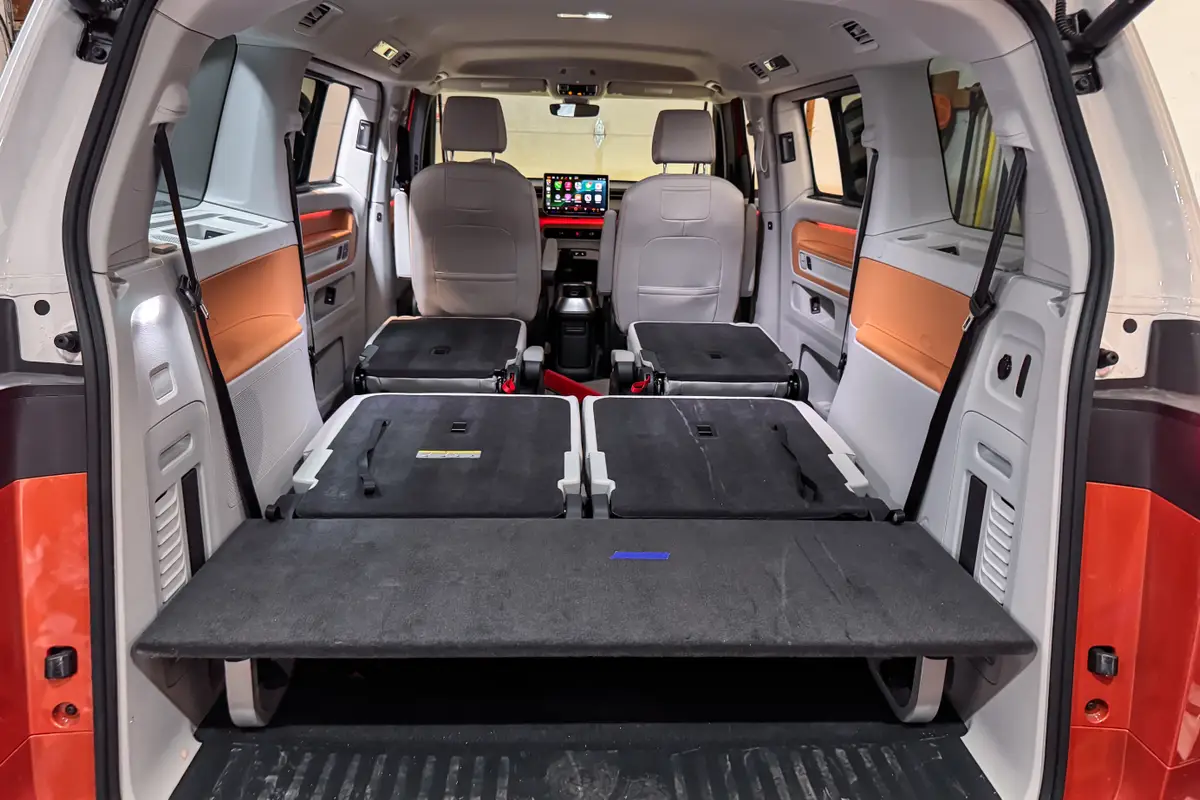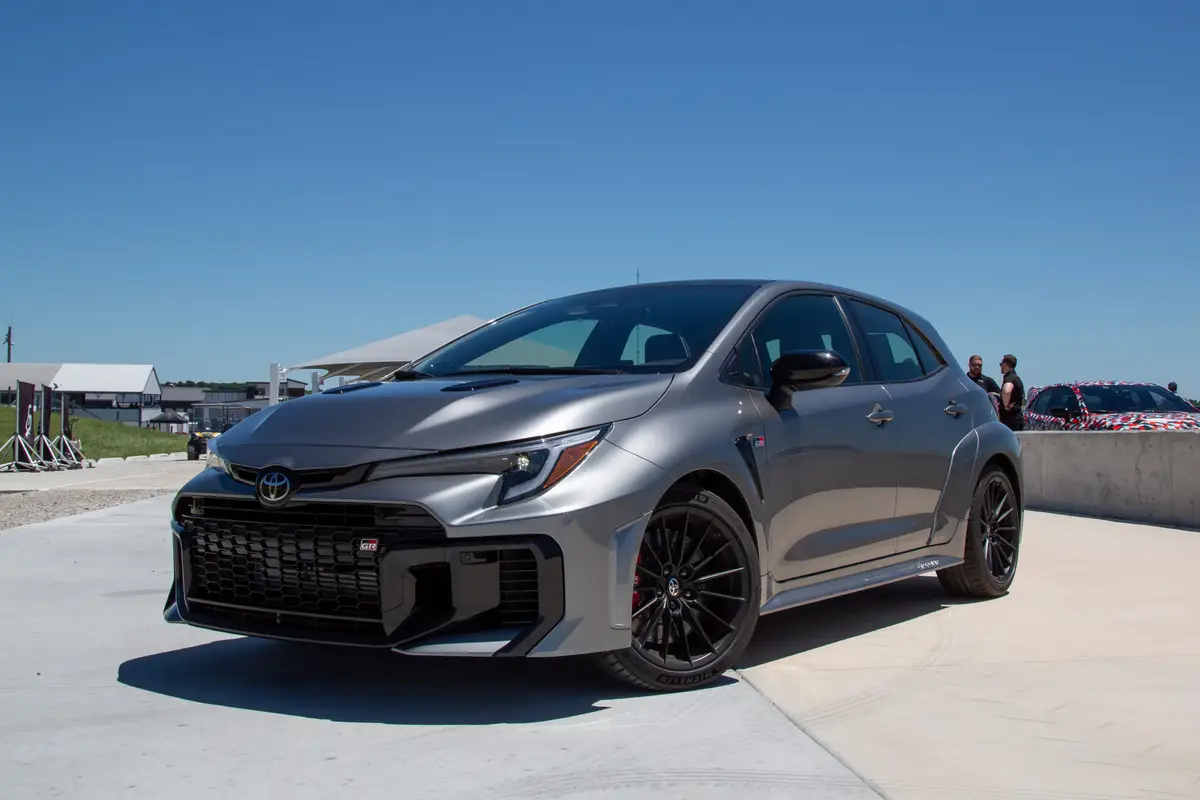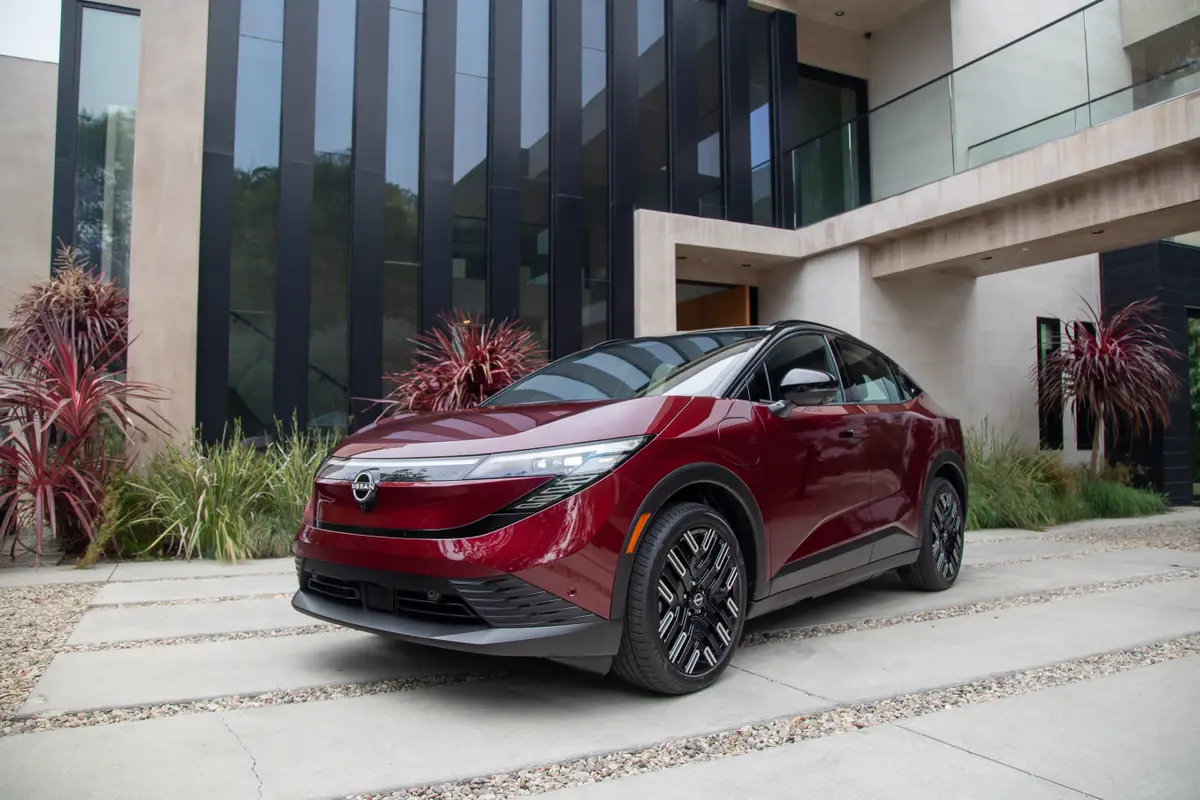Cargo Conundrum: Hyundai Tucson Versus Santa Fe Sport

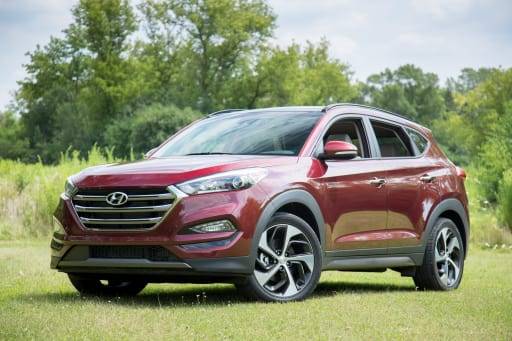
CARS.COM — Hyundai’s complete redesign of the Tucson crossover for 2016 adds a healthy dose of passenger and cargo room to the formerly tiny compact SUV. The 2016 Tucson is so much larger that the specs and distinction between Hyundai’s own midsize five-passenger Santa Fe Sport becomes muddier with the Tucson’s new dimensions. The vehicles are similar in size, but how different overall are they?
Related: 2016 Hyundai Tucson Expert Review
The Tucson is still smaller than the Sport version of the Santa Fe, though not by as much as you’d think. Cargo room dimensions behind the backseat for the 2016 Tucson is only 4.4 cubic feet short of the 2016 Hyundai Santa Fe (Sport) capacity (not the seven-passenger Santa Fe, whose name is still confusing). For 2016, the Tucson’s cargo area not only got larger, but Hyundai also enlarged the cargo opening. There’s now 31 cubic feet of usable cargo space behind the second row, compared with the Santa Fe’s 35.4 cubic feet, which is not a distinguishable amount when the cargo area is put to use.
Check out our interior cargo photos of the Tucson and Sport version of the Hyundai Santa Fe and you’ll see gear packed into both. The suitcase and grocery bags occupy a similar percentage of the cargo area’s trunk space behind the rear seats. The Santa Fe Sport’s cargo area is slightly wider, as is the whole car, but not by much. The Santa Fe Sport’s exterior dimensions have an additional 8.4 inches of length, 1.3 inches of height and 1.2 inches of width. A total 61.9 cubic feet of cargo space is available with the second-row seats folded, which is significantly less space than the Santa Fe Sport’s 71.5 cubic feet of cargo space. Compare the full specifications between the two here.
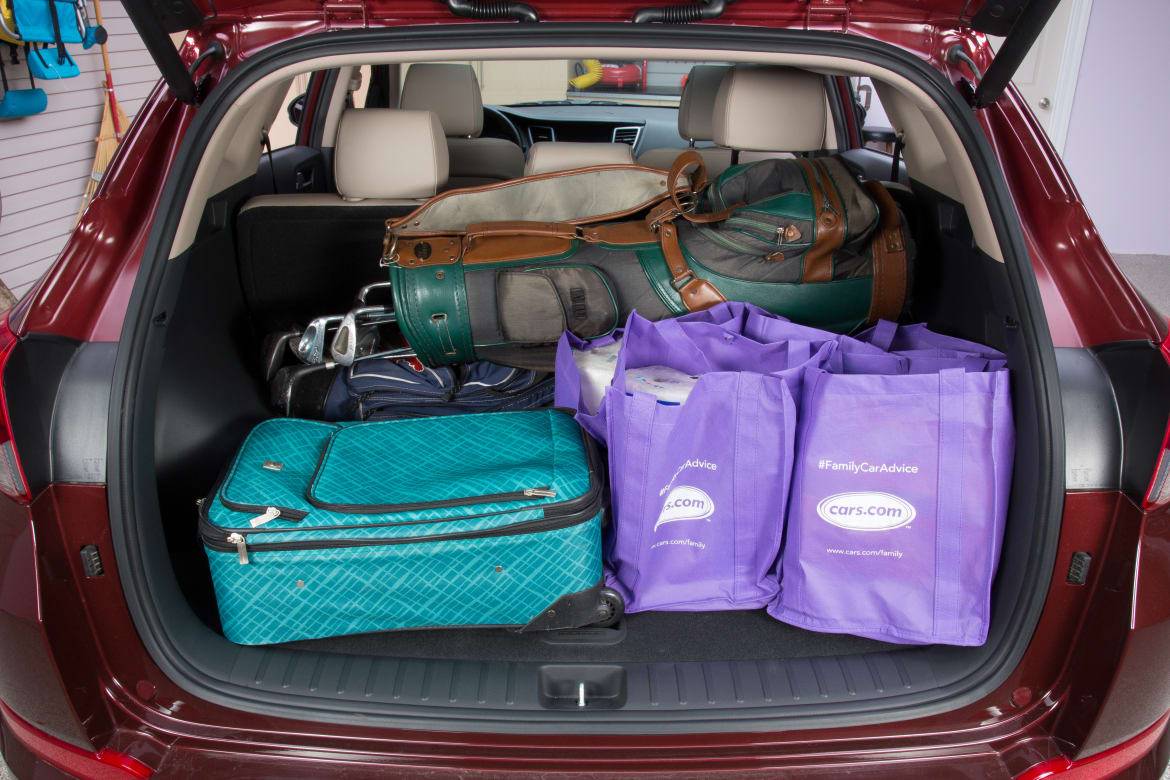
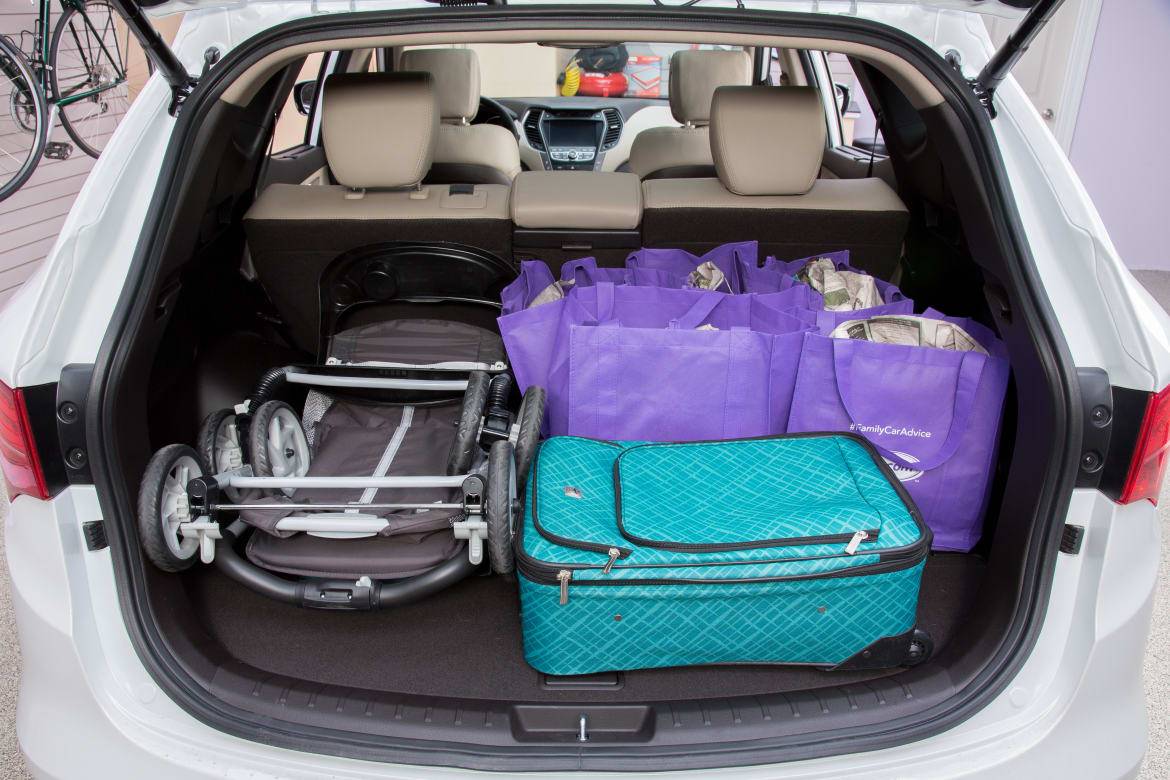
There’s not a huge difference in rear seat comfort, but the Sport version of the Hyundai Santa Fe does excel here with more passenger legroom than the Tucson, plus the Santa Fe Sport’s backseat slides fore and aft helping provide an extra few inches of legroom or cargo availability depending which way the seat slides; the Tucson’s backseat is fixed but it does recline.
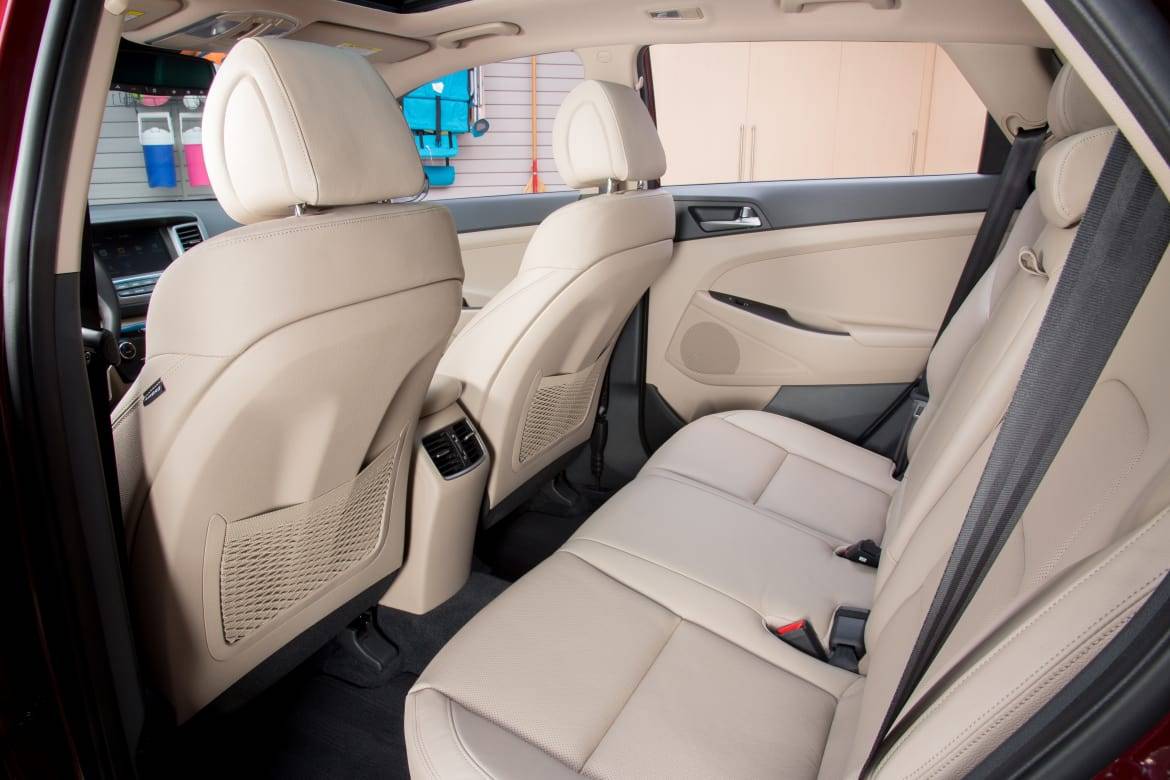
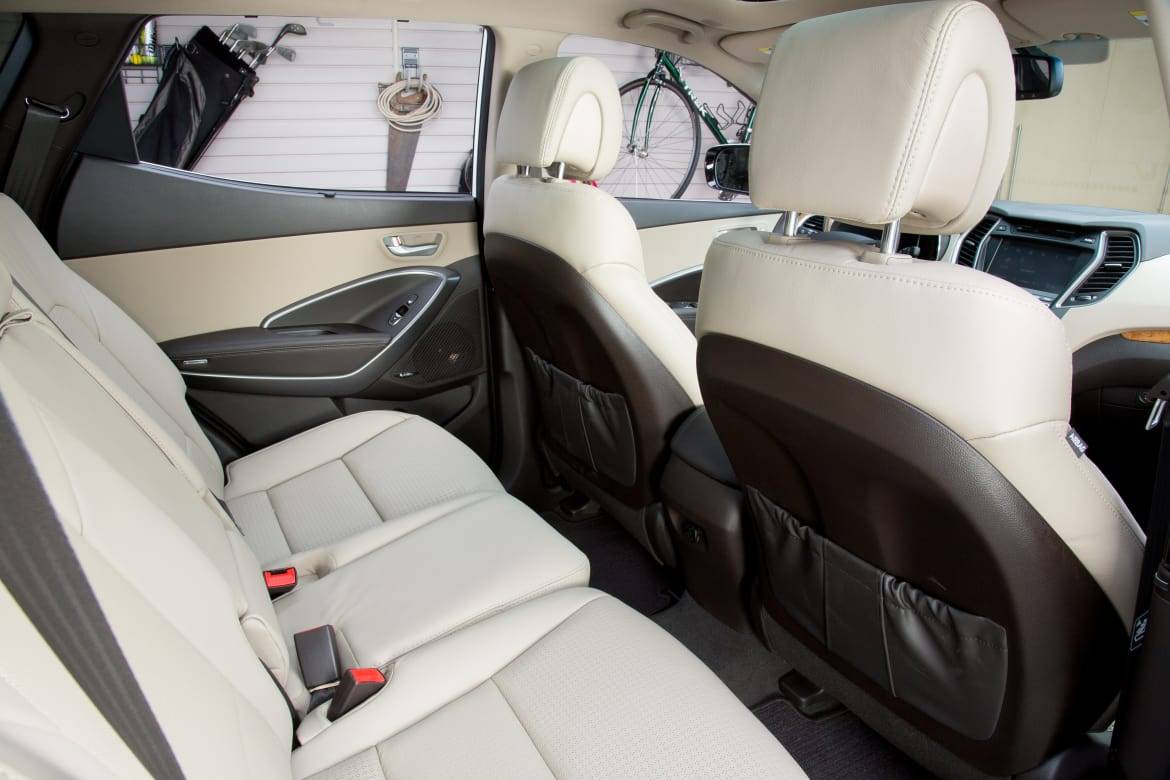
Conversely, the Tucson surprises with notable options the Santa Fe Sport doesn’t offer, including lane departure warning, a forward collision system with automatic emergency braking and adaptive headlights on the top Limited trim level. The Tucson aces the Insurance Institute for Highway Safety’s crash tests, including the difficult-to-pass small front-overlap test, and earns the IIHS’s Top Safety Pick Plus designation. The Sport version of the Hyundai Santa Fe shares IIHS crash test ratings with the three-row Santa Fe, but it manages only a marginal rating in the small font-overlap test; that’s low enough to exclude it from Top Safety Pick status.
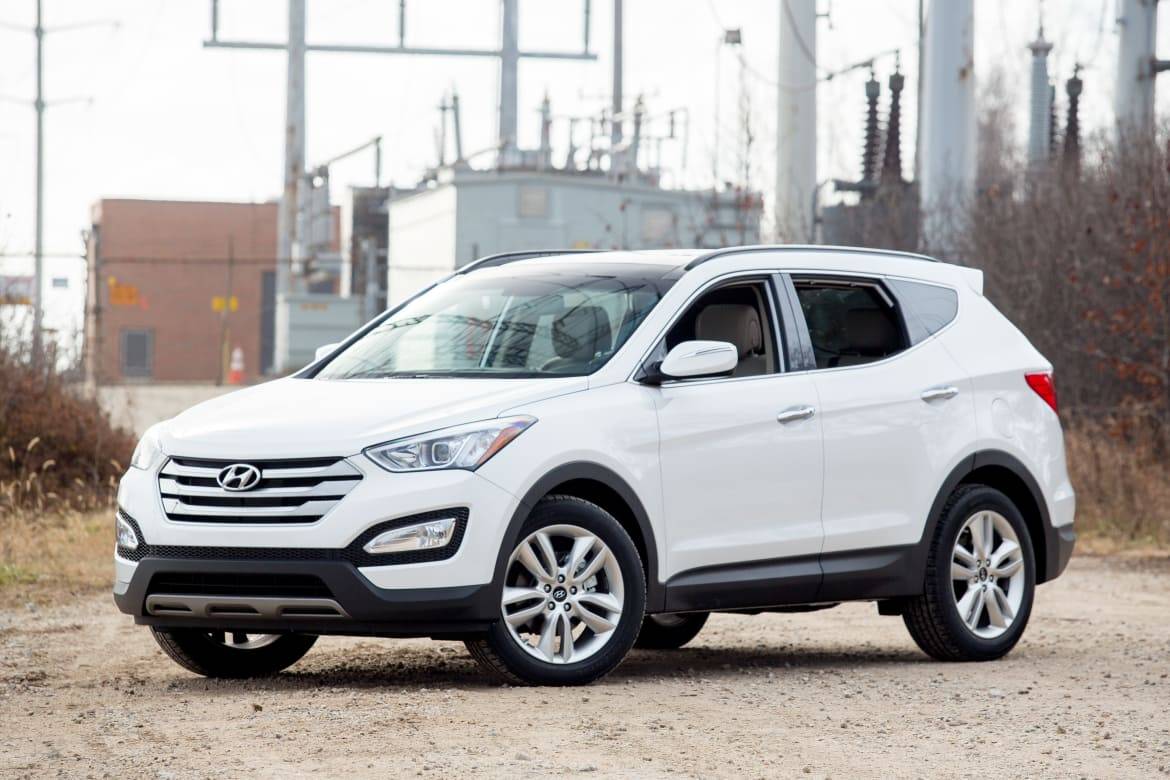
The Tucson gets its best fuel economy of 26/33/29 mpg city/highway/combined from its optional turbocharged 1.6-liter four-cylinder with front-wheel drive versus the Santa Fe Sport’s best fuel economy of 20/27/23 mpg with the standard 2.4-liter four-cylinder and front-wheel drive.
Unless you’re interested in the powerful Sport version of the Santa Fe’ 2.0 with the 264-horsepower, turbocharged four-cylinder engine, the Tucson is an interesting proposition given the increased room for 2016. The picture becomes a little clearer when you consider its $2,250 lower starting price and considerably better fuel economy.

Managing Editor Joe Bruzek’s 22 years of automotive experience doesn’t count the lifelong obsession that started as a kid admiring his dad’s 1964 Chevrolet Corvette — and continues to this day. Joe’s been an automotive journalist with Cars.com for 16 years, writing shopper-focused car reviews, news and research content. As Managing Editor, one of his favorite areas of focus is helping shoppers understand electric cars and how to determine whether going electric is right for them. In his free time, Joe maintains a love-hate relationship with his 1998 Pontiac Firebird Trans Am that he wishes would fix itself. LinkedIn: https://www.linkedin.com/in/joe-bruzek-2699b41b/
Featured stories
